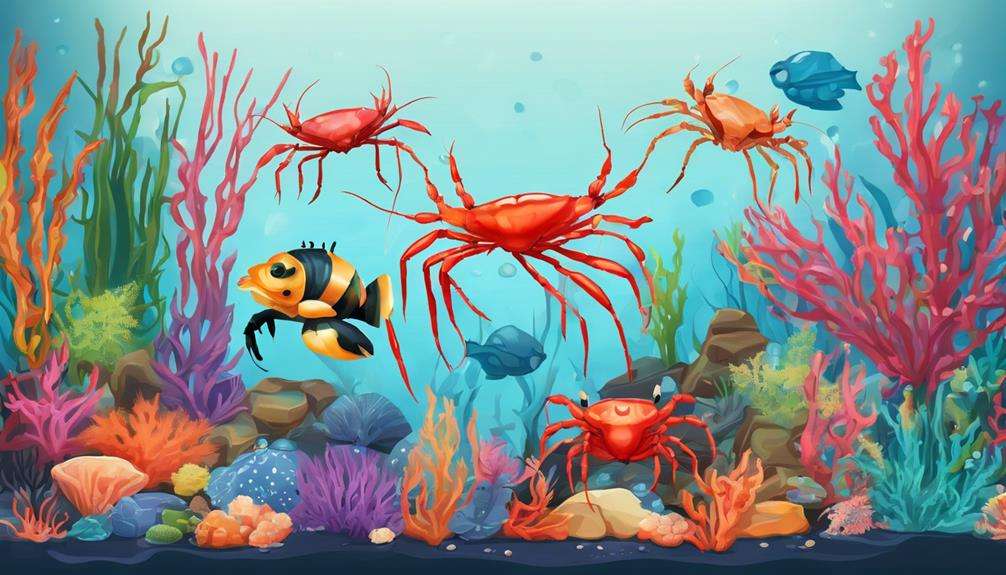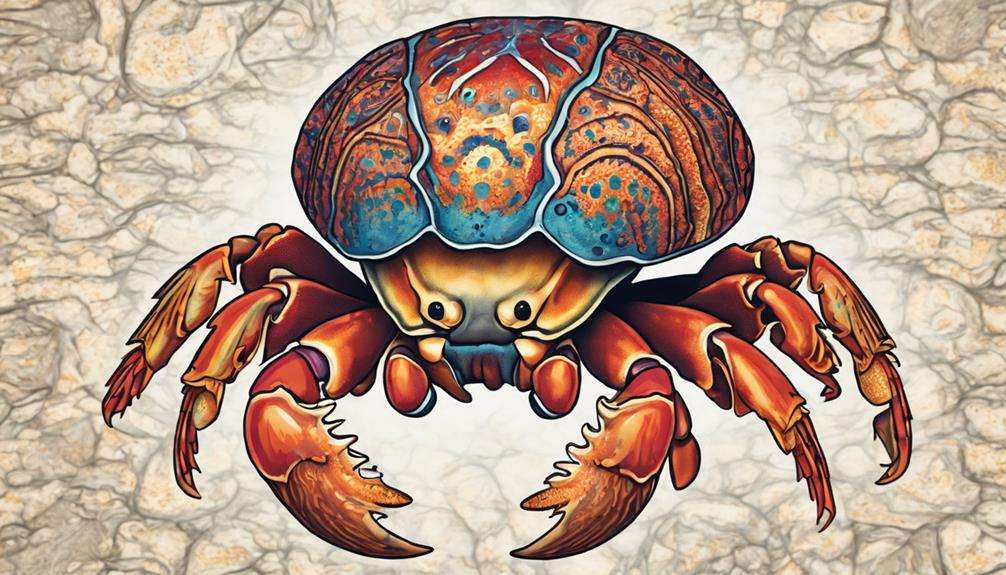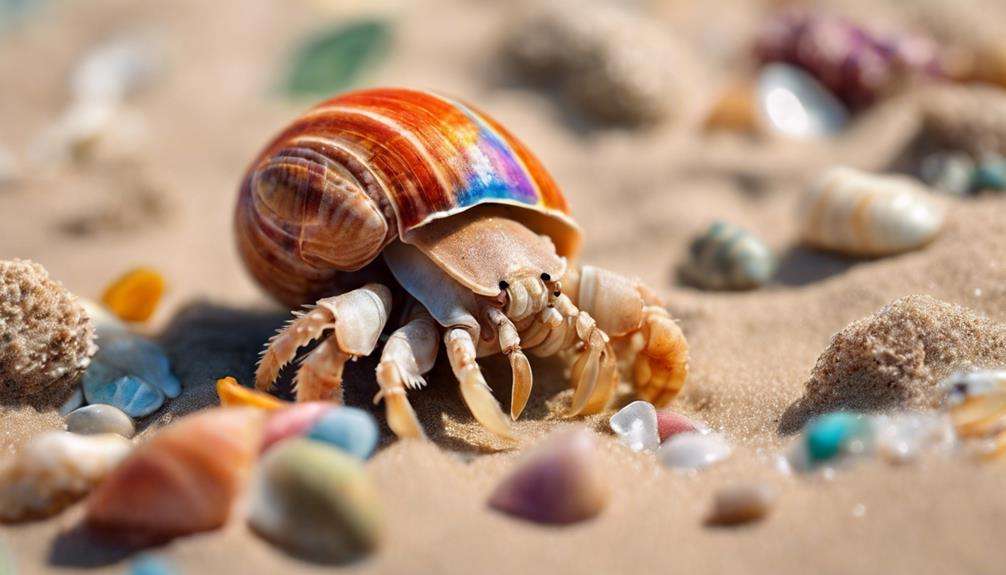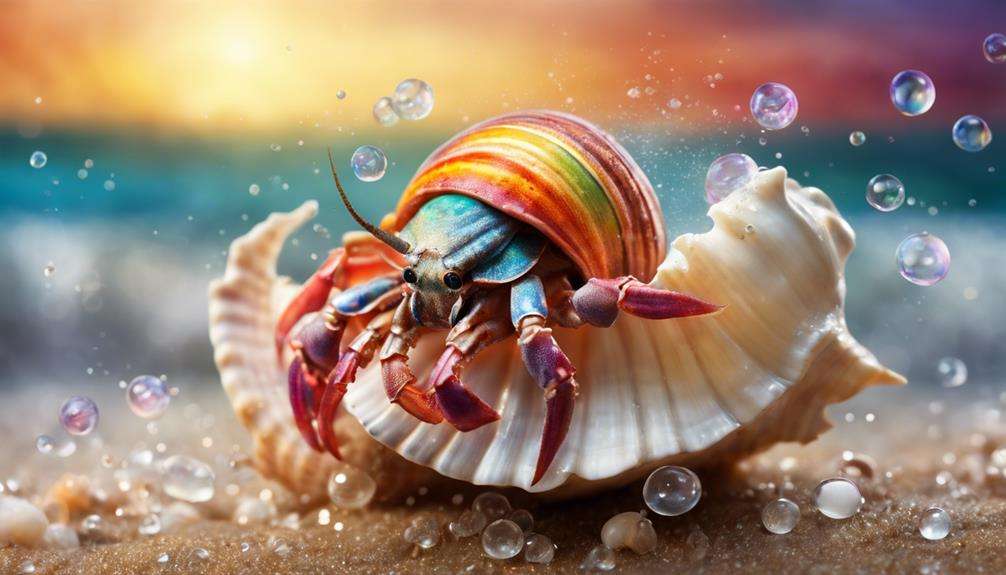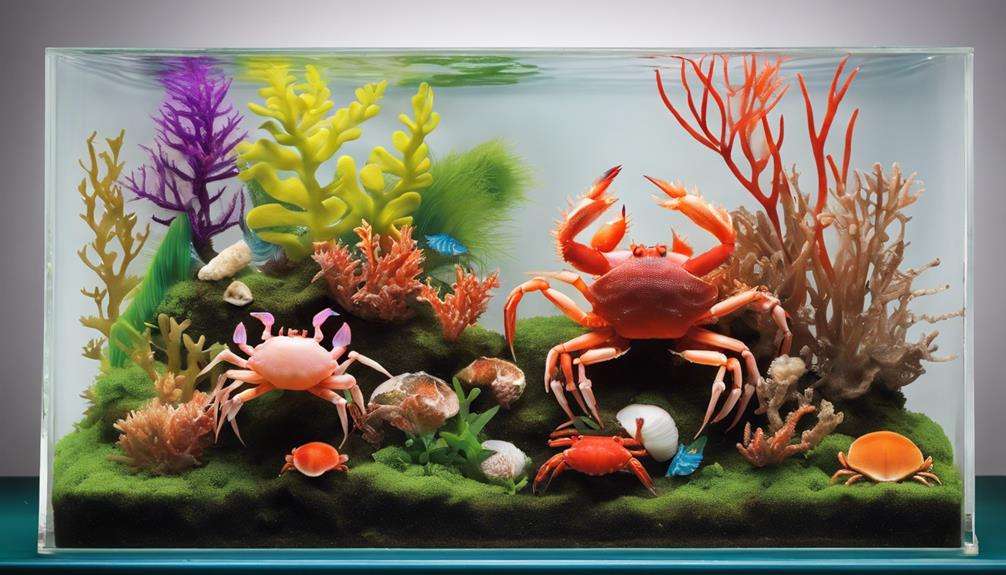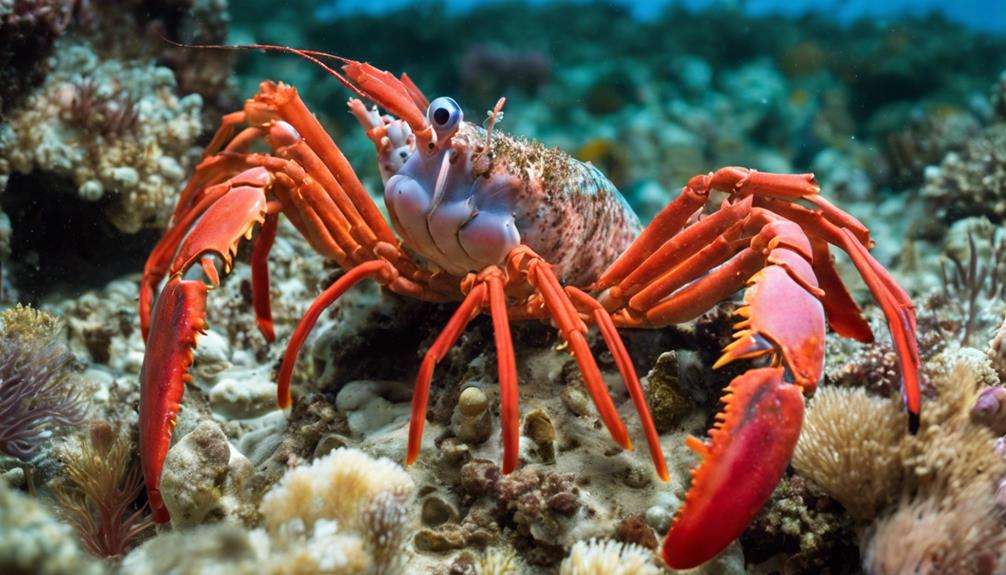As you dip your toes into the vast ocean of crustacean behaviors, imagine uncovering hidden treasures beneath the surface. From the captivating intricacies of their feeding rituals to the mysterious dance of movement patterns, these enigmatic creatures hold a world of secrets waiting to be unlocked.
With five expert tips at your fingertips, you're on the brink of unraveling the complexities of their behaviors. Stay tuned to unravel the mysteries that lie within the fascinating realm of crustaceans.
Key Takeaways
- Machine vision technology optimizes feed efficiency, enhancing crustacean growth.
- Reproductive strategies like simultaneous hermaphroditism ensure species survival and genetic diversity.
- Understanding movement patterns aids in locating optimal fishing spots and conservation efforts.
- Communication methods, including pheromones and visual displays, play crucial roles in social interactions among crustaceans.
Feeding Behavior Insights
When studying crustacean feeding behavior, machine vision technology plays a key role in tracking and optimizing feed efficiency. Crustaceans exhibit a wide range of feeding behaviors influenced by various factors, such as food availability and environmental conditions. By utilizing machine vision technology, researchers can closely monitor and analyze these behaviors to gain valuable insights into the feeding patterns of crustaceans. This information is essential for enhancing aquaculture production and ensuring the well-being of crustaceans in captivity.
Understanding crustacean feeding behavior is crucial for developing effective feeding strategies that promote growth, health, and sustainability in aquaculture settings. By analyzing data collected through machine vision systems in real time, adjustments can be made to feeding schedules to optimize feed efficiency and overall performance. These insights into feeding behavior not only benefit the crustaceans but also contribute to the advancement of aquaculture practices by refining feeding strategies based on scientific evidence.
Uncommon Reproductive Strategies
Uncommon reproductive strategies observed in crustaceans encompass a range of fascinating adaptations that contribute to their reproductive success. Simultaneous hermaphroditism is a unique strategy where crustaceans possess both male and female reproductive organs, allowing them to mate with any other individual of the same species. Sequential hermaphroditism, on the other hand, involves individuals changing sex during their lifetime, which can be advantageous for maintaining genetic diversity within the population.
Parasitic castration is a form of reproductive parasitism seen in some crustaceans. In this strategy, a crustacean manipulates the reproductive system of its host, often leading to the sterilization of the host while benefiting the parasite's own reproductive success. Brood parasitism is another intriguing behavior where a female deposits her eggs in the brood chamber of another female, shifting the parental care responsibilities to the unsuspecting host.
These uncommon reproductive strategies highlight the diverse and complex ways in which crustaceans ensure the survival and proliferation of their species.
Intriguing Movement Patterns
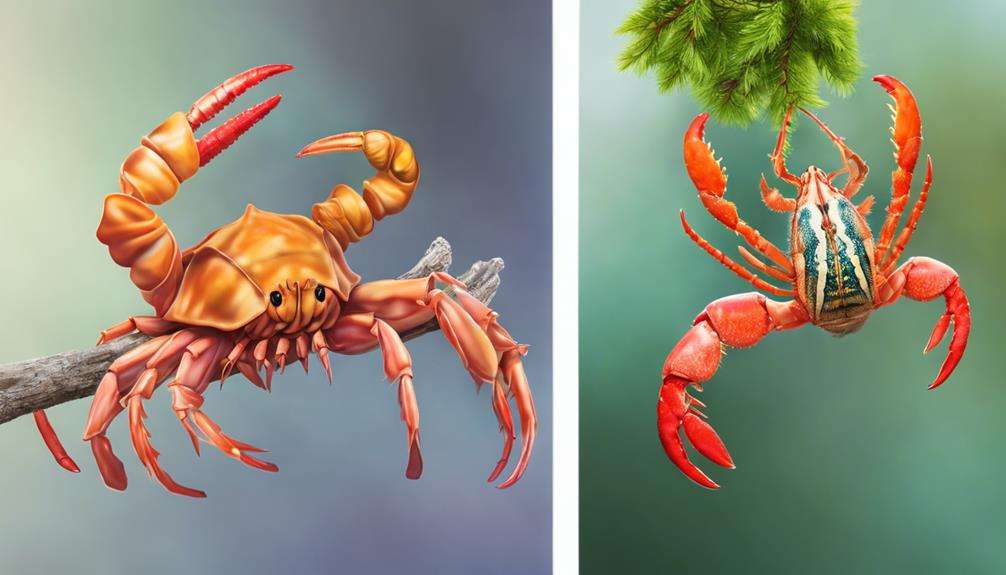
Crustaceans display a diverse array of intriguing movement patterns, classified into spatial and temporal categories, essential for their survival and ecological interactions. Different crustacean species exhibit specific spatial movements such as homing, nomadic foraging, and long-distance migrations, each crucial for finding resources and avoiding predators. Understanding these movement rhythms is vital for determining optimal fishing locations and strategies, especially during specific seasons when migrations occur.
To study and monitor these complex movements, researchers employ various techniques like tag-recapture, visual tracking, and acoustic telemetry. These methods help track individual crustaceans in their natural habitats, providing valuable insights into their spatial locations and behaviors. However, challenges such as technical complexities and the saline nature of aquatic environments can hinder monitoring efforts.
Monitoring movement behaviors in crustaceans isn't only important for scientific research but also for improving aquaculture performance and ensuring sustainable fishing practices. By deciphering the intricacies of crustacean movements, we can enhance our understanding of these creatures' ecological roles and contribute to their conservation.
Communication Methods Deciphered
Communication methods in crustaceans have been intricately deciphered through the understanding of chemical signals, visual displays, and tactile interactions. These mechanisms play crucial roles in maintaining social hierarchies, reproductive success, and group coordination.
Here are some key elements that shed light on crustacean communication:
- Pheromones: These chemical signals are fundamental in crustacean communication, influencing behaviors like mating and aggression. Pheromones allow individuals to convey information over distances and coordinate group activities.
- Visual Displays: Crustaceans use color changes and body postures to communicate messages about dominance and readiness to mate. Visual displays are essential in establishing social structures and resolving conflicts within populations.
- Tactile Interactions: Grooming and touching among crustaceans facilitate social bonding and convey important information. These interactions help strengthen relationships, establish alliances, and maintain cohesion within groups.
- Social Hierarchies: Communication methods are vital for establishing and reinforcing social hierarchies among crustaceans. Clear communication ensures smooth interactions within the group and helps avoid unnecessary conflicts.
Surprising Social Interactions
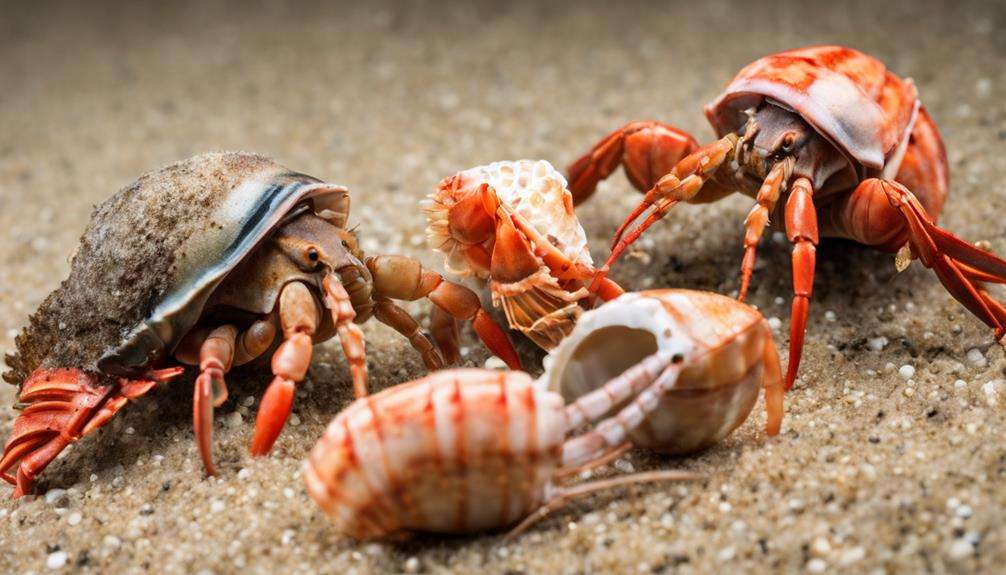
Surprising social interactions among crustaceans reveal intricate hierarchical structures and sophisticated communication through chemical signals. Dominance hierarchies play a crucial role in shaping behaviors such as feeding, mating, and access to shelter within crustacean populations. Aggressive interactions are commonly observed, with dominant individuals asserting control over valuable resources. These interactions are driven by the need to establish and maintain dominance within the group.
Chemical signals are integral to the social dynamics of crustaceans, allowing individuals to communicate dominance, establish territories, and coordinate group activities. These chemical cues serve as a form of language that helps regulate social behavior and minimize conflicts within the population. Understanding the role of chemical signals in crustacean social interactions provides valuable insights into their complex social structures and behaviors.
Frequently Asked Questions
What Are 5 Characteristics of Crustaceans?
Crustaceans, like molting to grow, varied feeding habits, diverse reproductive strategies, intricate social interactions, and unique environmental adaptations, showcase a fascinating array of characteristics. Their behaviors reflect a complex interplay with their surroundings and evolutionary history.
What Are Some Unique Behaviors Crustaceans Use to Communicate With One Another?
To communicate, crustaceans use social grooming to bond, aggressive displays for dominance, chemical signaling for alerts, mating dances for courtship, and cooperative foraging to collaborate. These behaviors ensure survival and social cohesion.
How Do Crustaceans Behave?
Crustaceans exhibit fascinating behaviors like intricate mating rituals, complex social hierarchies, effective defense mechanisms, specialized feeding habits, and remarkable environmental adaptations. Understanding these behaviors is essential for aquaculture success and conservation efforts.
What Do Most Crustaceans Have 5 Pairs Of?
In the world of crustaceans, most creatures boast 5 pairs of crucial appendages. These versatile tools aid in everything from sensing the world around you and feeding to establishing social hierarchies and even engaging in elaborate mating rituals.
Conclusion
You've now uncovered the intricate world of crustacean behaviors with these expert tips.
Did you know that some crustaceans can communicate through chemical signals, with a single lobster producing over 100 different types of scents to convey messages?
By understanding these unique behaviors, we can enhance our knowledge of crustaceans and improve their welfare in aquaculture settings.
Keep exploring the fascinating realm of crustaceans for more surprises and insights!

